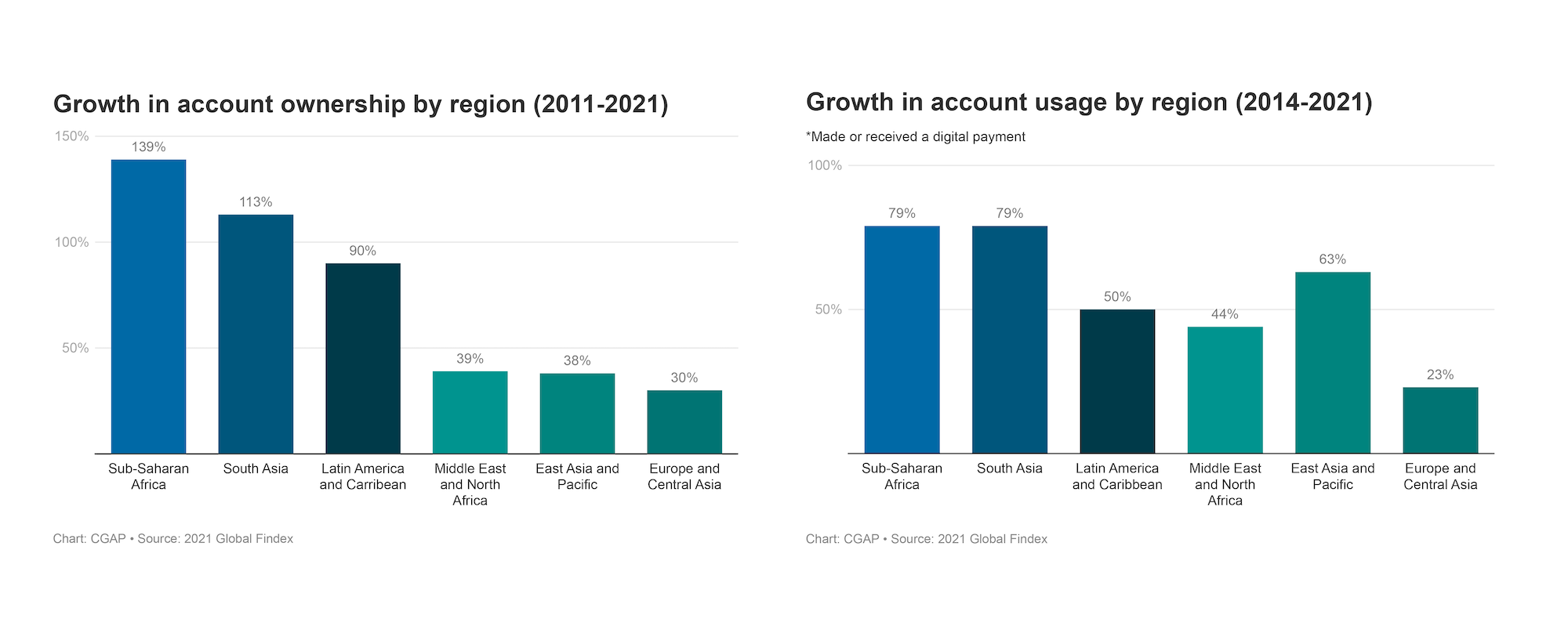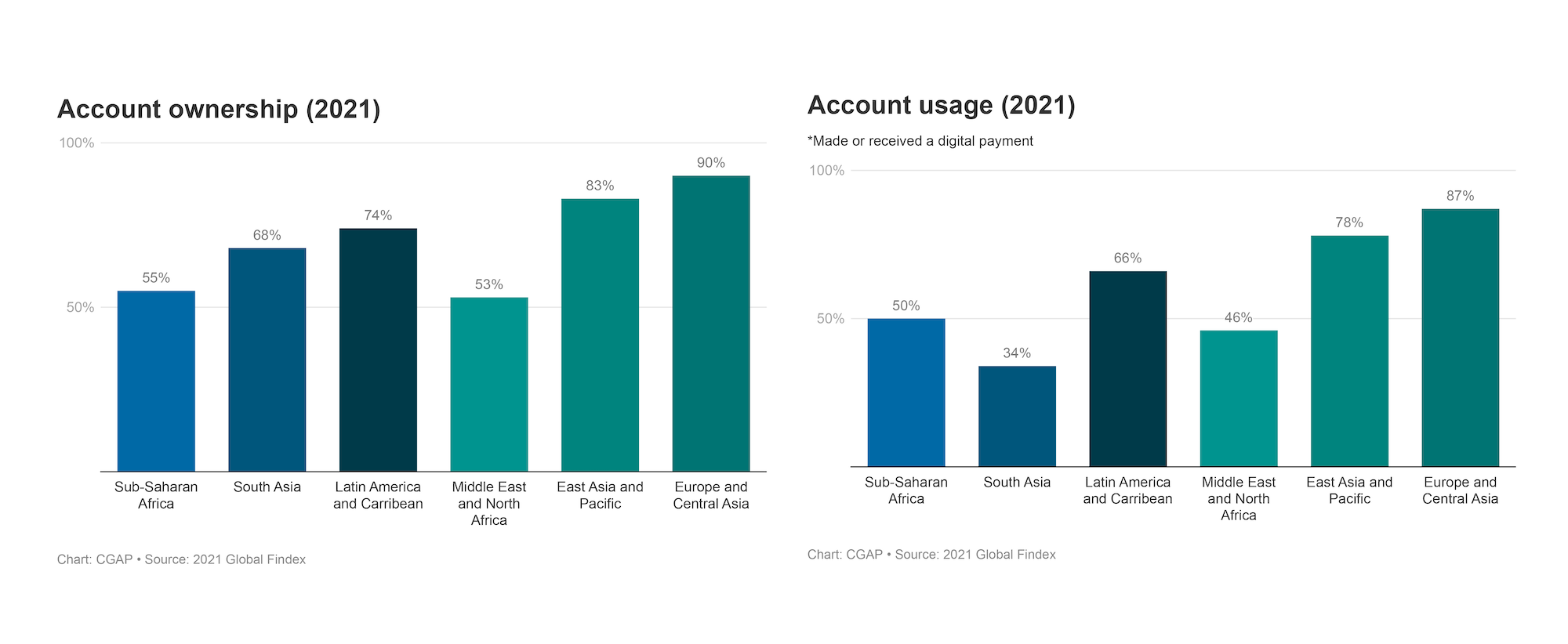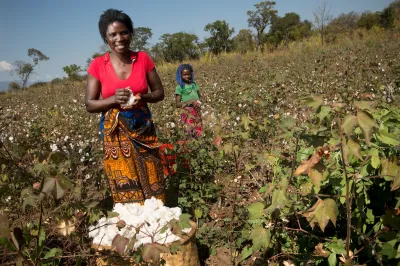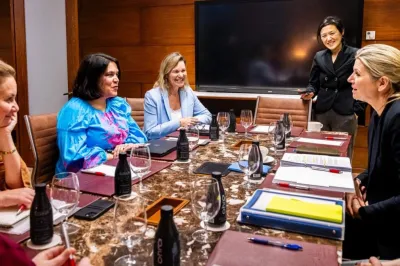Findex 2021 Insights: Boosting Financial inclusion in Africa
Sub-Saharan Africa has made remarkable progress in financial account ownership and usage over the past decade, doubtless spurred by mobile money. By 2021, all 11 economies with more adults in possession of a mobile money account than a financial institution account were in Sub-Saharan Africa. But the region lags behind others when it comes to closing the financial inclusion gender gap and indicators around the value of financial services. More effort is needed to sustain the financial inclusion trajectory in Sub-Saharan Africa, with even more emphasis on access to financial services and products with increased value for users.
Between 2011 and 2021, Sub-Saharan Africa experienced the fastest growth in account ownership, and between 2014 and 2021, the continent had the fastest growth in account usage (along with South Asia). Account ownership more than doubled from 23% in 2011 to 55% in 2021 compared to the global growth average of 50% (from 51% to 76% over the same period). Sub-Saharan Africa’s impressive account ownership growth rate is not surprising, given that some regions like Europe and Central Asia had a relatively high baseline in 2011. Despite this growth, however, Findex 2021 shows that Sub-Saharan Africa is still among the bottom three regions globally in terms of actual account ownership and usage. Findex 2021 also shows that Nigeria, the region’s most populous country, is one of the seven economies that together house more than half of the world's unbanked adults.


The diversity in mobile money use cases in Sub-Saharan Africa is also inspiring. Mobile money is no longer merely a person-to-person payment tool but facilitates other financial transactions such as wages, merchant payments, utility payments and savings.
Four opportunities to further advance financial inclusion in Sub-Saharan Africa
Although the achievements noted in Sub-Saharan Africa are significant, there are even more opportunities to boost financial inclusion in the region. These include:
Building people’s financial health
According to the Financial Health Network, financial health assesses whether people are spending, saving, borrowing and planning in ways that will enable them to be resilient to shocks and pursue opportunities – a key indicator of quality of financial services. Findex 2021 shows that Sub-Saharan Africa is the second to last region globally, after South Asia, where an individual could obtain funds with little or no difficulty within 30 days in the case of an emergency. According to the same data, accessing emergency funds is more difficult for women than men. About a third of adults in Sub-Saharan Africa rely on family and friends for emergency funds but more than half of them find it very difficult to obtain those funds when needed. Additionally, worry over school fees is much more common in Sub-Saharan Africa, as are concerns around medical expenses - these are highest in Sub-Saharan Africa and South Asia.
Indications of worry about school fees and medical expenses present an opportunity for financial services providers (FSPs) to develop innovative financial services that promote access to health, education and other essential services. Further, since one in three adults in Sub-Saharan Africa cannot use their account without help, with women being more likely than men to need help, financial sector actors can also develop dedicated programs to promote financial and digital literacy, especially among women. Effective financial and digital literacy programs can encourage about eight million unbanked adults in Sub-Saharan Africa who receive a government payment in cash to access formal financial services and improve their well-being.
Closing the financial inclusion gender gap
Globally, the gender gap in account ownership has fallen over the past decade. But in Sub-Saharan Africa, the gap rose from 5% in 2011 to 12% in 2021, triple the global average and double that of other developing regions. Although women in South Africa have more financial accounts than men, Findex 2021 shows that the gender gap in countries like Cote d'Ivoire and Nigeria is significant, at 27% and 20%, respectively.
Between 2017 and 2021, the growth in mobile money account ownership and usage was higher among women than men in Sub-Saharan Africa. But the percentage of women that used mobile money for saving, merchant payments, and utility payments was lower than that of men. For instance, in 2021, only 11% of women made a utility payment through mobile money compared to 37% of men.
A blend of initiatives can help to bring more women in Sub-Sahara Africa into the formal financial sector. To start, the financial inclusion community should understand what drives women’s uptake of informal services, address gender norms and mitigate digital finance consumer risks that may undermine women’s trust in formal financial services.
Developing effective identity systems
About a third of unbanked adults in Sub-Saharan Africa do not have the documentation required to open a financial account. The percentage is higher in Liberia, Mauritius, Mozambique, South Sudan and Tanzania, where more than 40% lack the required documentation. There is an opportunity for financial inclusion actors in Sub-Saharan Africa to develop collaborative customer identity verification systems to democratize financial inclusion and access to essential services.
Leveraging alternative digital data
Financial sector actors can also leverage the significant volumes of data created by the digital economy and develop effective mechanisms to share that data and create use cases that can provide greater financial access and usage and support the resilience of low-income people. However, in light of growing data misuse incidents, it is vital to ensure that adequate regulatory frameworks and data protection approaches are in place since financial service users value data privacy.
The positive financial inclusion progress in Sub-Saharan Africa offers excellent opportunities to spur economic growth in the region, given that financial inclusion is an enabler of sustainable development. But maintaining the momentum in advancing financial inclusion calls for concerted efforts among financial sector actors to not only promote access and usage but also enhance the quality of financial services while ensuring that financial consumer protection is central to those efforts.




Add new comment